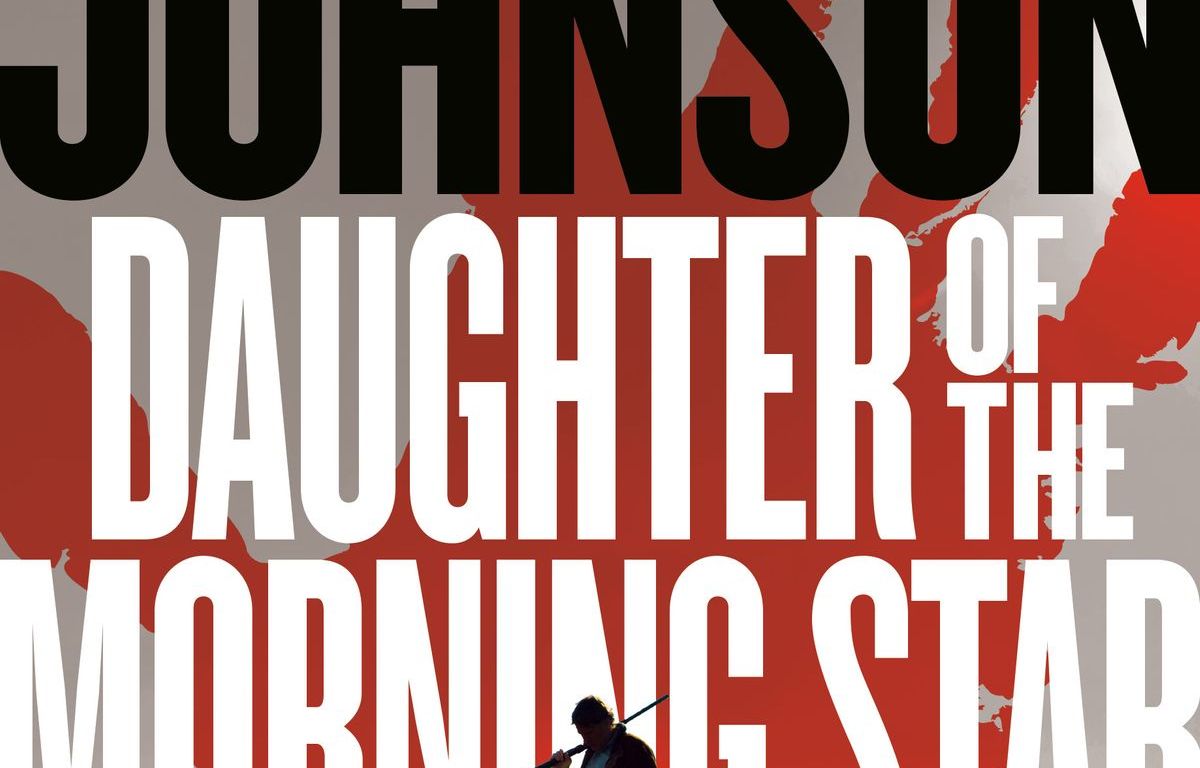Daughter of the Morning Star is the 17th installment in Craig Johnson’s long-running series of novels featuring Walt Longmire. Longmire is sheriff of (fictional) Absaroka County, Wyoming. In this story, Longmire is on the hunt for the person sending threatening notes to Jaya Long, a Cheyenne high school basketball player with a promising future … if she lives.
The problem is that her sister, Jeanie didn’t. One night, she got into a van with six others headed to a party in Billings, Montana, and never returned. Jaya and Jeanie’s aunt—Chief Lola Long of the Cheyenne Nation Tribal Police—doesn’t want her living niece to suffer the fate of her (presumed) dead niece.
Violence against Native women is a real problem, and it lends verisimilitude to this story. In the Acknowledgment, Johnson writes:
The plight of missing and murdered indigenous women is so great that I had to reassure my publisher that the statistics contained in this novel are accurate. The numbers are staggering, and they speak for themselves. What if I were to tell you that the chances of a Native woman being murdered is ten times the national average, or that murder is the third leading cause of death for indigenous women? What if I told you that four out of five Native women have experienced societal violence, with half having experienced sexual violence as well. Half of Native women have been stalked in their lifetime, and they are two times as likely to experience violence and rape than their Anglo counterparts. Heartbreakingly, the majority of these Native women’s murders are by non-Natives on Native-owned land.
These statistics are shocking. If Daughter of the Morning Star draws people’s attention to what’s happening on “the Rez,” as Longmire’s friend Henry Standing Bear might put it, it will have served a useful moral purpose.
That said, the book is a work of fiction and has to be judged as such. I have two simple tests for fiction: I must want to turn the page to see what happens next, and my willing suspension of disbelief cannot be strained too far. Daughter of the Morning Star gets an A for page-turning but a C+ for suspended disbelief.
There are two reasons for a lower grade on the suspended disbelief test. First—and I began pointing this out with the 2018 publication of Depth of Winter—Longmire is simply getting too old to pull to do what Johnson portrays him doing.
(According to Longmire’s biography, he went into the Marines after graduating from USC and saw action during the Tet Offensive. That offensive was 1968. If Longmire was 22 when he graduated USC, and if he fought at Tet as soon as he arrived in country, his birth year would be 1946, making him 75 years old today.)
[SPOILERS FOLLOW:]
For example, Longmire takes a hard fall in a canyon and is unconscious in wild nature for 30+ hours. Such a fall would hospitalize if not kill most people that age, but Longmire simply gets stitched up—by a Native woman using needle and thread, no less—and keeps moving, with no obvious side effects. Trapped in a burning warehouse, he climbs up barrels to kick out a high window and somersaults himself onto the roof. He then jumps off it. Having done that, he cold-cocks a deputy, throws him over his shoulder, and carries him away from the building which is about to explode.
If you’ve read any of the Longmire novels—or seen their adaptations on the small screen—you also know that Johnson incorporates elements of Native spirituality into the plotlines. Here, Longmire encounters Éveohtsé-heómėse(“The Wandering Without”), which Standing Bear compares to the biblical Legion. He also seems to have an interaction with a dead woman, as do a couple of others in the story.
It’s a measure of Johnson’s story-telling ability that I found Éveohtsé-heómėse and other elements of Native spirituality more believable than some of the stuff Longmire did in this story.
Still, despite these obvious flaws, I enjoyed the book. Walt Longmire narrates this story in the first person. We experience his dogged commitment to justice, his sorrow for the fate of Native women, his cynical humor, and his lifelong friendship with Henry Standing Bear from the inside out. If, as Aristotle taught, pathos is the element of rhetoric that drives our emotional buy-in, I’m sold on Longmire as a person, even if I have doubts about some of his acrobatic exploits.
If past performance is any indication, Johnson’s 18th novel should come out in September 2022. My hunch is that Longmire is going to face off with Éveohtsé-heómėse at a long-closed boarding school for Native boys, one in a long line of injustices foisted on a long-suffering people.
Whether they will receive justice—in fiction or in real life—is an open question.
Book Reviewed
Craig Johnson. Daughter of the Morning Star (New York: Viking, 2021).
P.S. If you liked my review, please click “Helpful” on my Amazon review page.


I so agree with your review. Yet I love the book and will continue to be a fan!